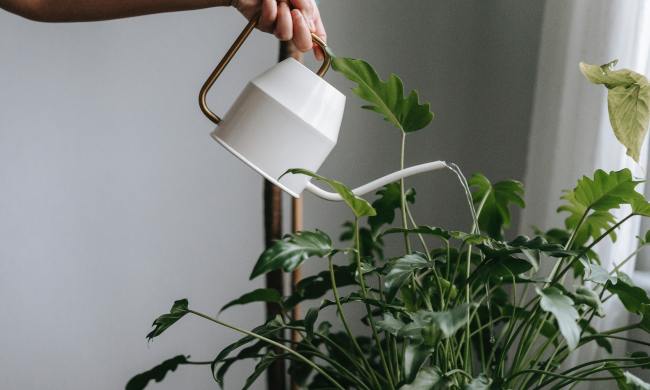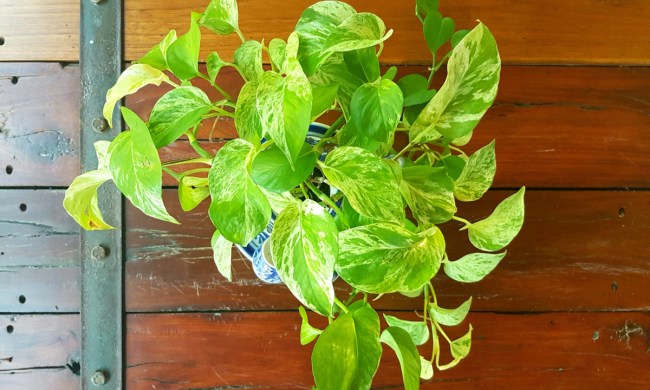A kitchen staple, basil is one of those herbs found in every other recipe. You’ll also find it more or less at every nursery, given its prolific and incredibly easy-to-grow nature. And not to mention, basil is a potted herb at most grocery stores all year round. Whether you’re using this ubiquitous herb for pesto or Thai basil chicken, here’s everything you need to know about basil and how to care for it.
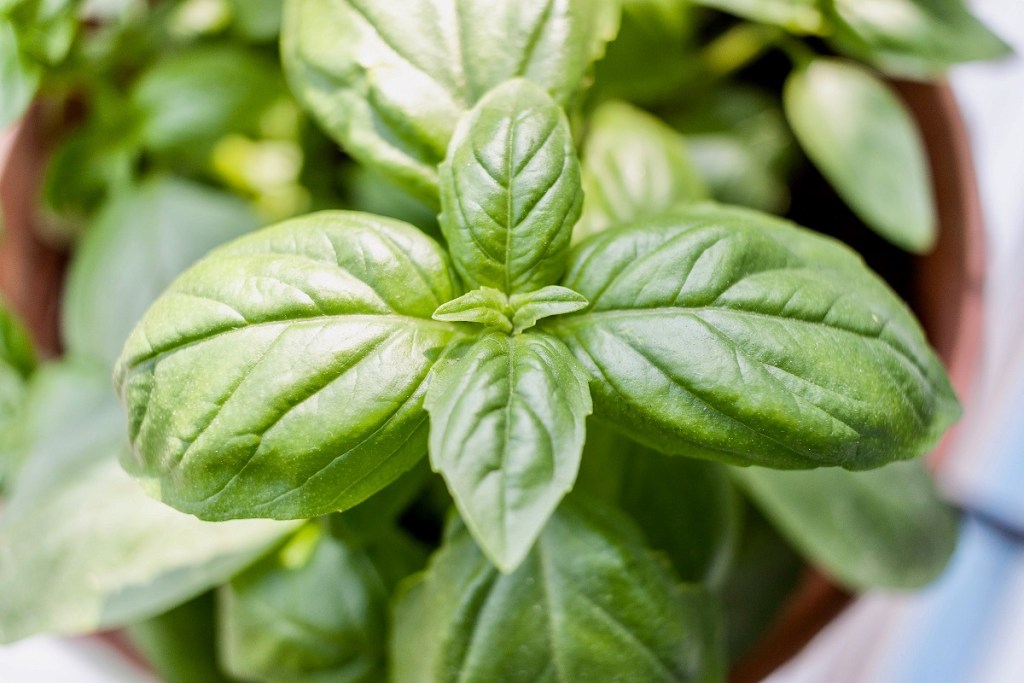
What is basil?
Basil is a versatile plant thanks to its sweet, aromatic leaves that range from bright green to deep purple and flat to wrinkled. It puts out the most growth during the summer, which is why it’s often in summer dishes. Likely native to India, it’s now used in many cuisines, including Thai and Italian. Some of the main bail types include sweet basil, Genovese basil, and purple basil. There are also flavor basils, such as lemon basil and cinnamon basil.
You can use this herb to add flavor to salads, pastas, curries, and more. It strikes a unique balance between sweet and savory with its minty and peppery taste. If you have an excess of basil, you can also dry or freeze it for future use. While it’s a culinary staple, some people also grow it for ornamental purposes.
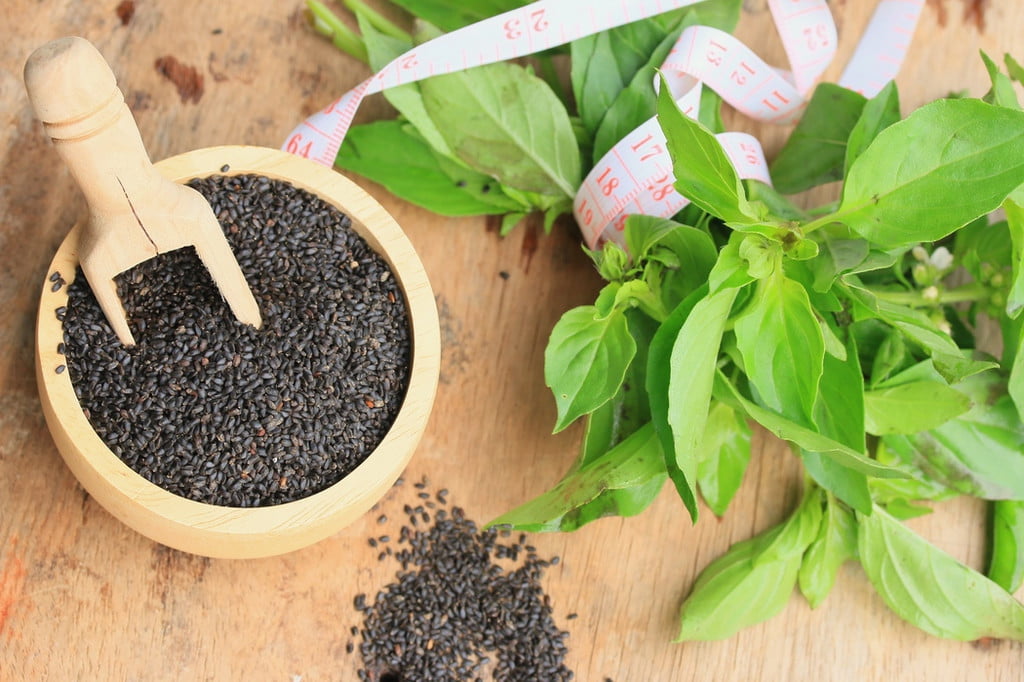
How do you start basil?
Basil is easy to start from seed as long as it has a warm growing medium — well-draining soil mixed with compost is ideal. You can begin basil indoors six to eight weeks before the first frost or directly sow it into your soil outside once night temperatures stabilize beyond 50 degrees Fahrenheit. You can place seeds 1/4 inch deep and 6 to 8 inches apart. The roots need space to spread and have ample air circulation, so you may want to thin your basil seedlings at some point so the plants are even further apart.
You can also take a cutting from an overwintered basil plant to start a new plant. When propagating basil, use a stem that isn’t flowering for the best results. Use a clean-cutting instrument to snip off a stem and then remove two or three sets of leaves. Place the cutting in water and wait for the roots to grow, or dip it in rooting hormone and plant it directly in soil.
Once your basil reaches 6 to 8 inches tall, it should be ready for harvest — this may only take three to four weeks.
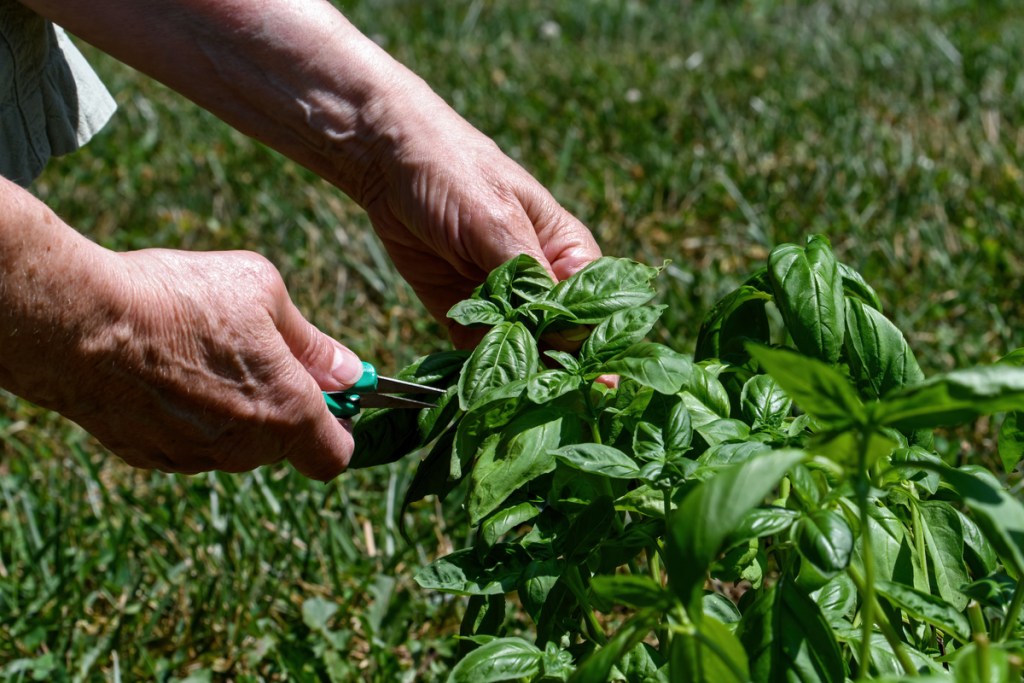
How do you care for basil?
Although it can be a short-lived plant, depending on where it resides, basil is relatively easy to grow. With these care tips in mind, you should have a prolific basil plant on hand before you know it.
- Light: You can keep basil as an outdoor or indoor plant as long as it receives sufficient light. Basil needs six to eight hours of sunlight a day. It does best in full sun, although it does appreciate shade in hot climates. If it’s a container plant indoors, leave it by a south-facing window. If you rely on grow lights, give your basil around 10 hours of light a day.
- Temperature: Basil is a cold-sensitive plant. It does best in warm temperatures above 70 degrees Fahrenheit, requiring heat to grow well. Come fall, it’s one of the first plants to die because it simply doesn’t tolerate the cold. To extend your growing season, you can overwinter your basil or place row covers over it.
- Watering: The herb appreciates thorough watering, but it doesn’t do well in soggy soil. Keep your basil in well-draining soil and use a planter with drainage holes if you don’t plant it directly in the ground. Water your plant only when the top inch of soil dries out. During hotter months, mulch the base of your plant so that it retains moisture better.
- Fertilizing: Feed basil with an all-purpose liquid houseplant fertilizer at half strength during the growing season.
- Pests: Basil can, unfortunately, be prone to pests, such as aphids, whiteflies, thrips, beetles, caterpillars, and more. You can usually remove larger insects by hand, but you may need to apply neem oil or some other type of natural treatment to manage some pest infestations. On the flip side, you can also grow basil as a companion plant to repel mosquitoes.
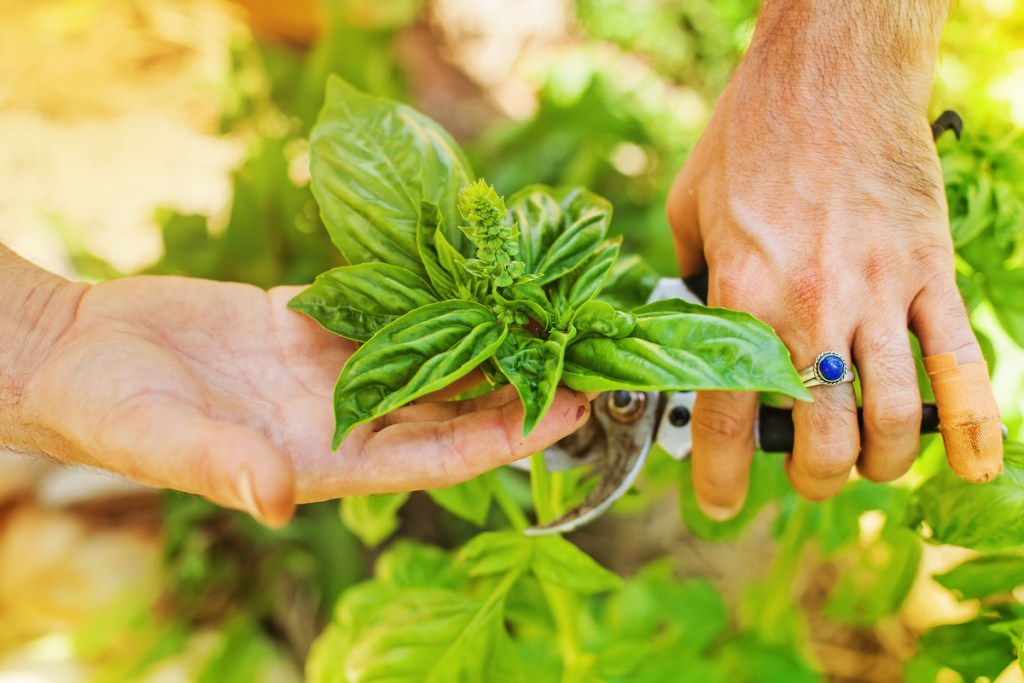
How long do basil plants live?
Basil typically grows as an annual herb, which means it’ll usually last one growing season for anywhere around four to six months. It can last up to two years in warm areas, and it may last even longer indoors. Unless you’re lucky enough to have it as a perennial in zones 10 and 11, basil will go to seed once it flowers. To delay this process, pinch off the flower shoots to prevent flowering. If you don’t do this, your plant will go to seed sooner, and the leaves will taste bitter.
Even though basil eventually dies, you can make the most of it while it’s still growing. To encourage growth, prune or pinch your basil as it grows. With mature plants, you can prune up to a third of your plant at a time.
Basil is an easy herb to throw in when cooking, and it’s arguably just as easy as a plant to grow when gardening. With full sun and moist but well-draining soil, this easy-going herb stays happy and prolific until cold weather hits. If you’re looking for the next herb to start in your garden or kitchen, you can’t go wrong with basil.

